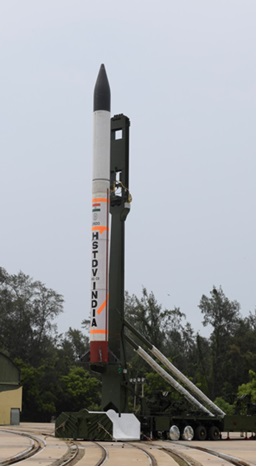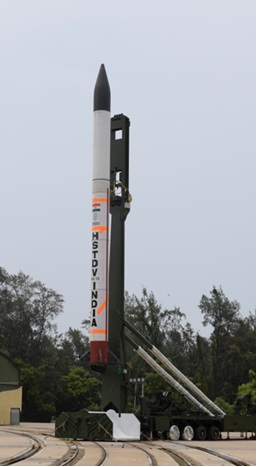Bengaluru, NFAPost: India entered that elite club of countries when the Defence R&D Organisation’s (DRDO’s) experimental Hypersonic Technology Demonstration Vehicle (HSTDV) took off from the APJ Abdul Kalam Launch Complex, off the Odisha coast and, after separating from its launch vehicle at an altitude of 30 kilometres, flew at Mach 6 for more than 22 seconds.
The HSDTV has a range of uses, including missiles for air defence, surveillance and reconnaissance, besides aiding the development of energy-efficient, low-cost and reusable satellite launch vehicles. Only three countries – Russia, USA and China – have flown a vehicle in the atmosphere at hypersonic speed: six times the speed of sound (Mach 6), or two kilometres (km) per second.

“The scramjet engine developed by our scientists helped the flight achieve a speed 6 times the speed of sound! Very few countries have such capability today,” tweeted Prime Minister Narendra Modi.
The success of Monday’s flight test of the HSTDV was confirmed by India’s defence minister Rajnath Singh and the Defence Research and Development Organisation (DRDO). “The @DRDO_India has today successfully flight tested the Hypersonic Technology Demonstrator Vehicle using the indigenously developed scramjet propulsion system. With this success, all critical technologies are now established to progress to the next phase,” Singh said in the first of two posts on Twitter.
According to Defence Analyst Ajay Shukla, enormous military advantages are available from hypersonic flight as most cruise missiles fly today at sub-sonic speeds of 250-300 metres per second.
“This renders them vulnerable to interception by the enemy’s supersonic fighter jets before they strike their targets. However, a hypersonic cruise missile, flying faster than any fighter, would strike its target well before it can be intercepted. And the kinetic impact of a Mach 6 strike would utterly demolish the target,” said Defence Analyst Ajay Shukla.
The DRDO has taken almost 20 years to develop and test-fly the HSTDV at its flagship missile laboratory – the Defence R&D Laboratory (DRDL), Hyderabad. Spearheading this effort was Dr Prahlada Ramarao, who headed DRDL till 2005 and then remained associated with the project from DRDO Headquarters in Delhi.
In its statement, the DRDO described the achievement as “historic.” “DRDO with this mission has demonstrated capabilities for (developing and delivering) highly complex technology that will serve as the building block for next-gen hypersonic vehicles in partnership with industry,” it said.
India first tested the HSTDV last year in June. Monday’s test was also conducted from the Dr APJ Abdul Kalam Launch Complex at Wheeler Island, off the Odisha coast.
Hypersonic transport aircraft would allow the army to move troops far more quickly to reinforce positions when a threat is detected. If reinforcements were required in Ladakh, troops from Thiruvananthapuram would require just 25 minutes of flying time to reach Leh.
The DRDO has taken almost 20 years to develop and test-fly the HSTDV at its flagship missile laboratory – the Defence R&D Laboratory (DRDL), Hyderabad. Spearheading this effort was Dr Prahlada Ramarao, who headed DRDL till 2005 and then remained associated with the project from DRDO Headquarters in Delhi.
According to the DRDO, the HSTDV piggybacked on a solid rocket motor to an altitude of 30 km, where it separated from the launch vehicle. There, the air intake opened, hypersonic combustion was initiated and sustained, and the cruise vehicle continued on its programmed flight path at Mach 6 for more than 20 seconds.
“The parameters of launch and cruise vehicle, including the Scramjet engine were monitored by multiple tracking radars, electro-optical systems and telemetry stations… A ship was also deployed in the Bay of Bengal to monitor the performance during the cruise phase of hypersonic vehicle. All the performance parameters have indicated a resounding success of the mission,” stated a DRDO release.
Amongst the critical technologies validated in the test were the “aerodynamic configuration for hypersonic manoeuvres, use of scramjet propulsion for ignition and sustained combustion at hypersonic flow… [and] and high temperature materials,” said the DRDO.
Signalling a role for private defence firms to manufacture hypersonic vehicles, the DRDO said this “highly complex technology will serve as the building block for NextGen hypersonic vehicles in partnership with industry.”





